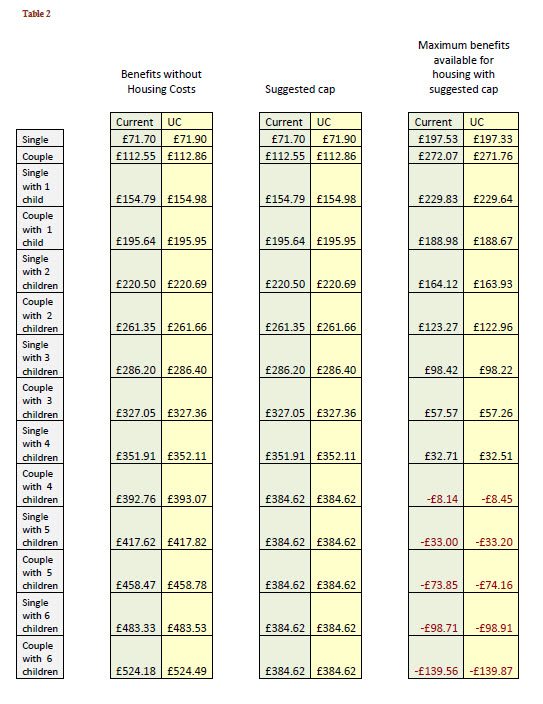The Impact of a £20,000 Benefit Cap
by Gareth Morgan on September 15, 2013
“George Osborne is considering a further lowering of the amount households can receive in benefits as Tory MPs press him to reduce a newly-imposed cap by another £6,000.
A limit of £26,000 a year was imposed on claimants yesterday, but the Chancellor is facing calls to take a harder line from backbenchers who want it cut to £20,000 as part of a post-election assault on welfare spending.”
The Times, July 16th 2013
“Chancellor George Osborne is considering lowering the benefits cap by a further £6,000, one of his aides confirmed to Inside Housing today.
The Treasury will base a decision on whether to make the further cut depending on the effectiveness of the current benefit cap, which began its national roll-out on Monday, in reducing the welfare bill.”
Inside Housing July 17th 2013
I was surprised by how little reaction there was to the floating of this idea when it emerged in the summer. The existing cap will have caused distress to those 40,000, according to government estimates, households affected by it; many many more would be affected by such a reduction in the maximum amount of benefit, if this suggestion went ahead.
For the existing cap, I have modelled the effect on housing affordability of its introduction for every area in Great Britain, looking at a range of family sizes for zero to six children and using local rent figures for social and private housing in appropriate sized homes in each area. I did this for both the current benefit system and Universal Credit (Northern Ireland isn’t included in the tables as details of the Universal Credit scheme introduction there are still uncertain). You can download those tables from this site.
With that work as a basis, I have repeated the exercise to see what the effect of a £20,000 cap would be; and they would be devastating.
Firstly, let’s look at the current cap. Table 1 shows the effect of the current cap on different family types.
This table shows how much benefit without housing costs differently composed families are entitled to. You can see that as families grow larger they qualify, unsurprisingly, for more benefit. That means, assuming that they need this money entirely for all their non-housing related expenses, there is less potential benefit left for paying rent. Indeed a couple with 6 children is already capped, with £24.49 taken off their benefit before any rent is taken into account. A couple with 5 children will have a maximum of £41.53 from Housing Benefit, or £41.22 from Universal Credit, help towards their rent.
Table 2 shows what would happen with a £20,000 cap.
With this cap, a couple with 4 children will be over £8 a week short before they pay one penny in housing costs. The detailed tables show that a couple with 3 children, who will have just over £57 a week maximum help with their housing costs will not be able to find a 3 bedroom property anywhere in Great Britain for that amount, at LHA level or local social rent. A couple with 6 children would already be capped by almost £140 a week before they try to pay any rent.
I hope that if this outrageous suggestion reappears, and it may as party conference season starts this week, that the detailed tables, which map actual local housing costs for every local authority and LHA area, may help those who will be opposing it.
You can download the full document here


Comments
[…] The Impact of a £20,000 Benefit Cap Posted on September 15, 2013 by Gareth Morgan […]
[…] Benefits in the Future is a blog scrutinising many of the figures behind claims on welfare reform, often providing more depth than general news reports. Here, for example, he explores some of the subtle challenges around a £20,000 benefit cap. […]
So glad you published these figures, they are vital data just now.